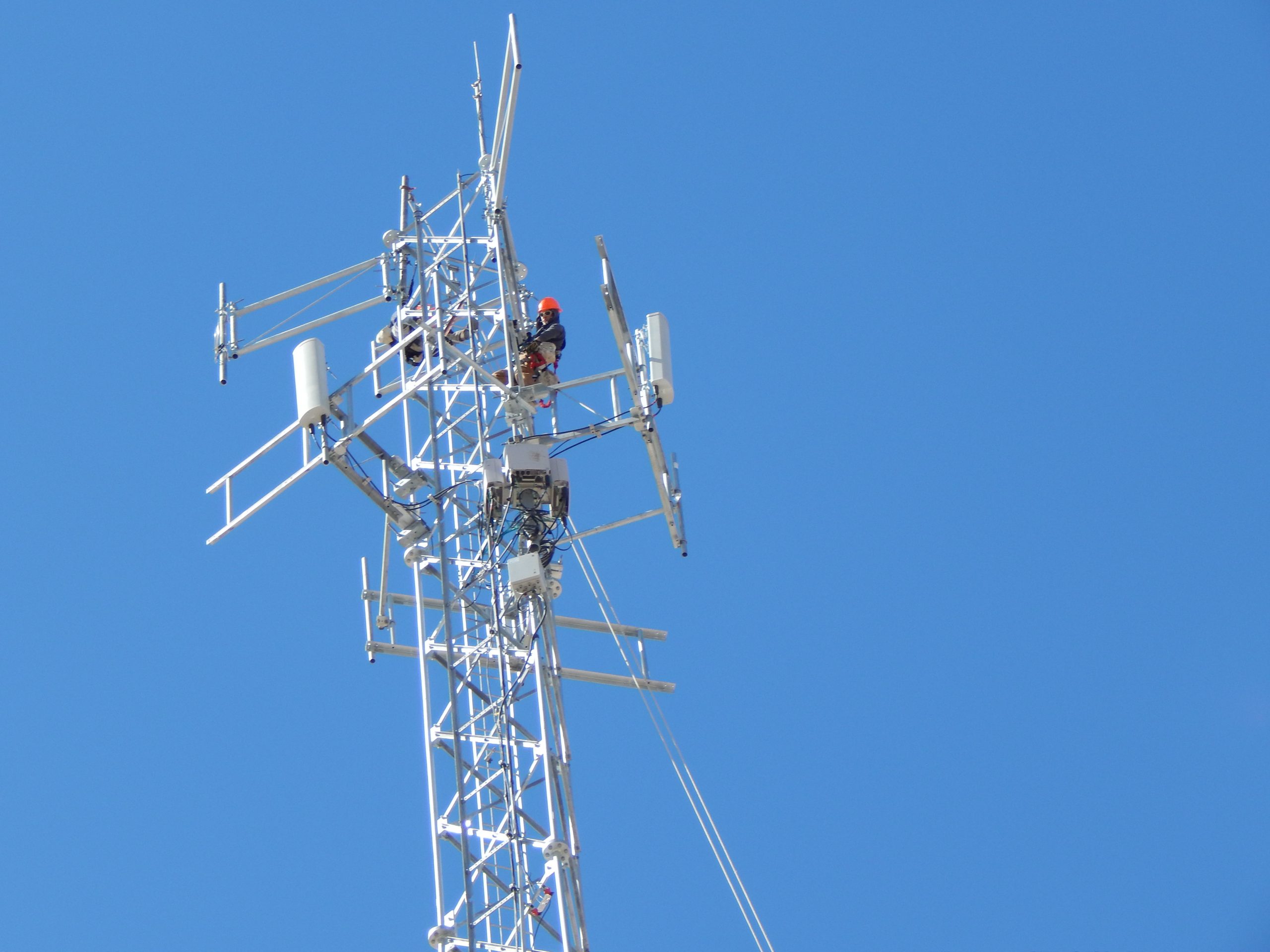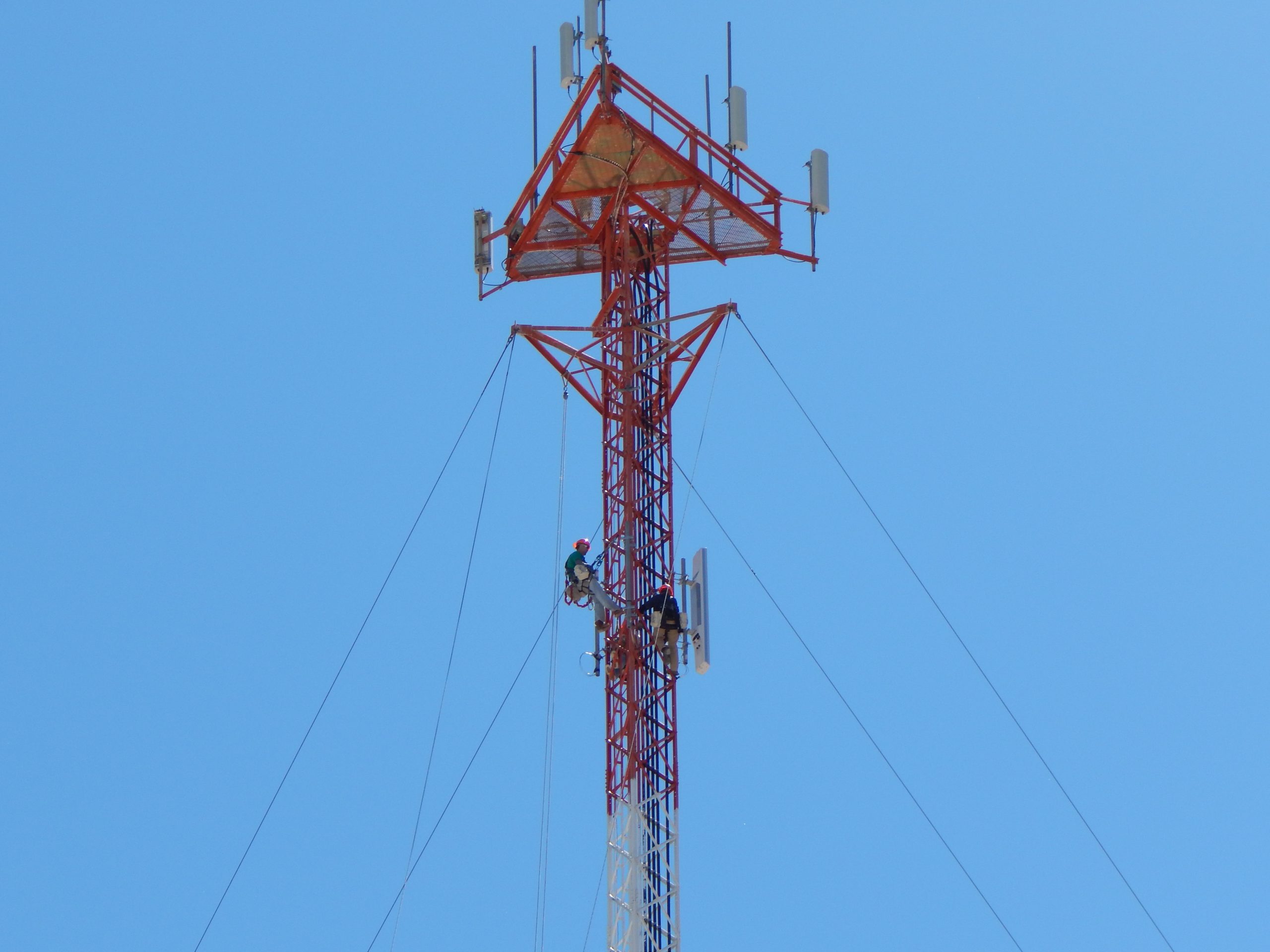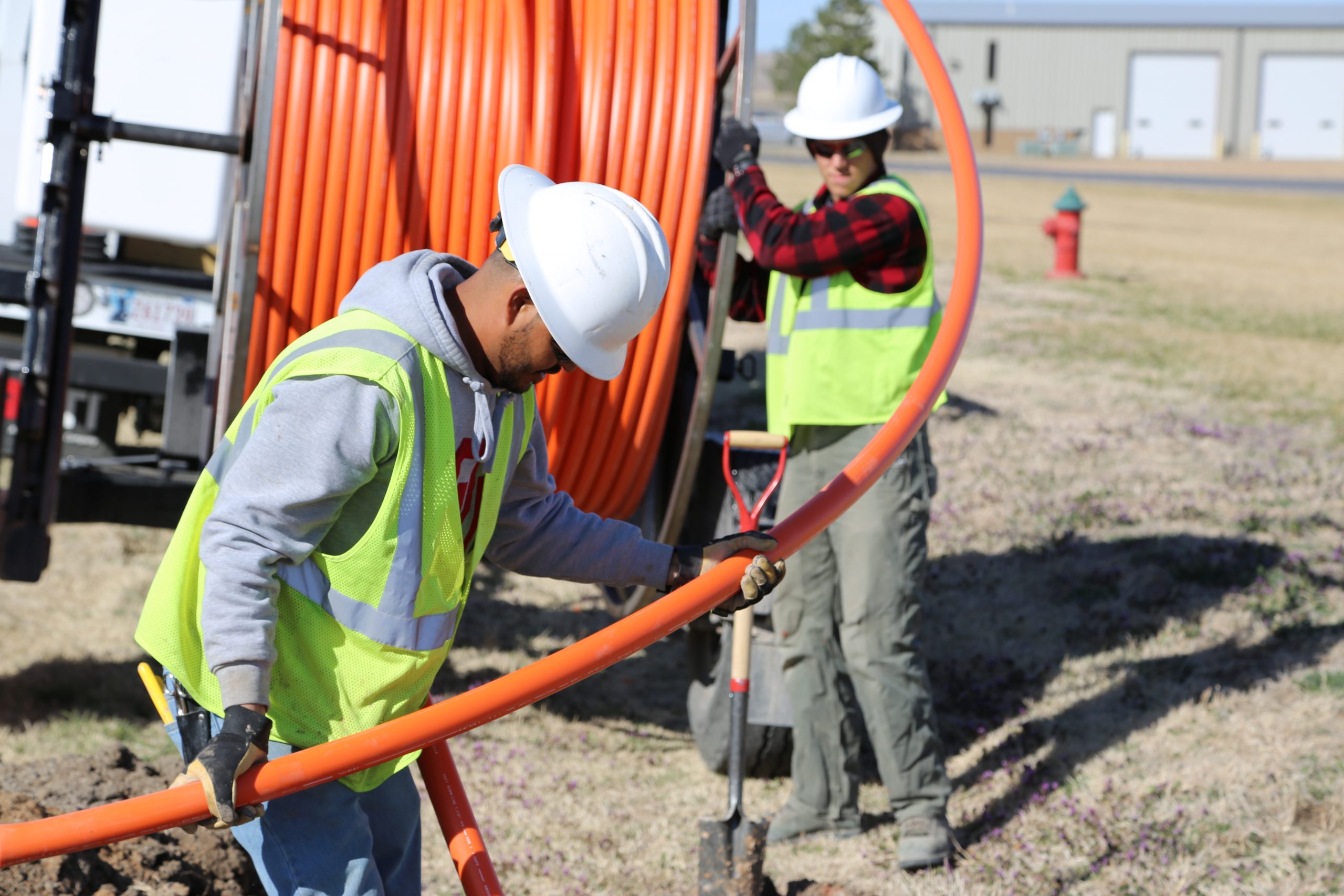History
1950s
Panhandle Telephone Cooperative, Inc. (PTCI) has come a long way since its inception in 1954 when a representative of the Rural Electrification Administration in Washington, D.C. met in the Beaver County Farm Bureau facilities with some 35 individuals who were intent on acquiring telephone service for themselves and their neighbors. Many obstacles had to be overcome, including getting a statute passed that would permit telephone cooperatives to operate in the State of Oklahoma.
The original board of trustees consisted of Carlyle Brown, Carl Cline, W.A.Colvin, W.M. Deck, Royce Mires, Marion Peters, and Wesley Sanders. In 1956, PTCI acquired its first REA loan to improve service to 506 subscribers, including 266 new members. Two years later, PTCI cut over service to its first four exchanges: Adams, Balko/Bryans Corner, Floris, and Tyrone, with about 600 subscribers.

1960s
Robert Jeffries was hired as Manager in 1960. In 1960 and 1961, PTCI acquired an additional 485 subscribers from four more exchanges: Hardesty, Eva, Griggs, and Felt-Wheeless. The Logan exchange followed in 1962, and in 1963, the Kenton exchange was added.
Continued growth and expansion of facilities made it necessary to construct a headquarters building. This building was located at 603 S. Main Street, Guymon, Oklahoma, and continues to serve as PTCI’s headquarters.
In the late 1960s, PTCI upgraded service from an eight-party system to a four-party system, extending and replacing old lines with buried cable.

1970s
1973 marked the beginning of two major projects to improve quality service to PTCI’s subscribers: 1) The conversion of subscriber billing to a computer system, and 2) Upgrading all exchanges to one-party service using all buried cable.
Also, in 1973, PTCI acquired the Turpin exchange.
Gary Kennedy, who had worked for the company since 1958, was selected to succeed Robert Jeffries as General Manager in 1979. He was very involved in the state and national arena in telephone issues and served on the board of several organizations, including OTA, NTCA, and OPASTCO.
1980s
1980 marked the completion of the upgrade of all exchanges to a one-party service using all buried cable.
In September 1983, PTCI purchased the exchanges of Hooker and Forgan.
To deal with the FCC’s decision to deregulate the telephone industry, PTCI formed a subsidiary early in 1983. Panhandle Telecommunication Systems, Inc. (PTSI) afforded the cooperative competitive avenues to sell business telephone systems, paging systems, and other associated telephone equipment.
In 1988, the “Panhandle Shar-Ed Video Network of Beaver County” (PSVN), provided full video-audio interaction between the four Beaver County high schools. It was one of the very first teaching systems of its kind in the United States. PSVN eventually served most of the area’s high schools and OPSU.
In June of 1989, PTSI entered the cellular telephone business. PTSI was one of three partners who were awarded TX RSA 2 in the Texas Panhandle. In August of 1989, PTSI was awarded OK RSA 1, becoming the primary cellular service provider in the Oklahoma Panhandle.

1990s
In 1994, PTCI acquired eight new exchange areas from GTE. Seven of the acquired exchanges became a part of PTCI. At this same time, EagleNet, Inc., a wholly-owned subsidiary of PTCI, was formed. EagleNet, Inc. was a commercial telephone company serving the City of Guymon with over 6,500 customers. The combined customer base of PTCI and EagleNet, Inc. was more than 16,500.
In December 1994, Gary Kennedy retired, and Ron Strecker became the Chief Executive Officer. Mr. Strecker was actively involved with PTCI and the telephone industry since 1975.
In April of 1999, PTCI/EagleNet introduced Asynchronous Digital Subscriber Line (ADSL). ADSL brought access to expanded capabilities to many of the companies’ customers. The product provided a constant, high-speed Internet connection, with the capacity for future growth.
2000s
In 2004, the decision was made to market all services offered by PTCI and its subsidiary, PTSI, under the one name ‘PTCI’ to eliminate customer confusion.
PTCI established a competitive telecommunications service in Perryton, Texas, in 2001. In April 2004, PTCI expanded its competitive telecommunications services to include Spearman, Texas.
In January 2002, PTCI rolled out Digital Interactive Television (DITV) to Guymon subscribers. By July 2004, DITV was available to 16 communities in the Oklahoma Panhandle and Perryton, Texas. In 2005, PTCI acquired Cebridge cable television properties and began servicing an additional 2500 customers in 6 more Oklahoma Panhandle communities and 4 Texas communities. In 2006, PTCI purchased Texhoma cable television property.
By 2006, PTCI had 26 cell sites in the Oklahoma Panhandle with more planned for the future. In the third quarter of 2007, PTCI expanded its basic cellular home area into the upper Texas Panhandle by placing four cell sites in Sherman County, Texas.
In 2007, the cellular network was upgraded to Evolution-Data Optimized (EVDO) or 3G service. Phase 1 of the project called for 16 cell sites that enabled wireless Internet access using broadband radio frequencies. In 2007, five additional cell sites were added, and in 2008, three more were brought online. In 2009, one more site was added for a total of 25 3G towers.
In 2009, to improve internet access to rural population clusters, PTCI began to deploy fiber-to-the-home (FTTH) technology.

2010s
As part of our quest to upgrade cellular service, in 2010, PTCI added six more cell sites, and additional sectors were added to the Guymon South, Goodwell, and Hooker Town towers. A new cell site in Kenton was installed in 2011. In addition to these cell sites, a portable cellular tower on a trailer was set up in Tyrone, bringing the total cell site count to 39, including four in Sherman County, Texas, and one in Liberal, Kansas. The portable trailer was later moved to Optima.
In 2012, PTCI continued to bring cutting-edge technology to the Panhandles. PTCI utilized 700 MHz wireless spectrum by implementing a 4G LTE (long-term evolution) network to rural customers in the Oklahoma and Texas Panhandles.
December 17, 2012, Ron Strecker, CEO, retired after 38 years with PTCI. On December 18, 2012, Shawn Hanson began as General Manager and CEO of PTCI.
In 2014, PTCI formed a strategic network sharing agreement with AT&T and deployed a new 4G LTE cellular network. By the end of 2014, the new network consisted of 33 cell towers with plans for four more in 2015.
In June of 2015, PTCI began offering broadband as a patronage service in response to the declining landline service subscribership. Broadband has become an essential service, so bringing it into the Cooperative moves PTCI into the 21st Century.
PTCI initiated a five-to-seven-year plan to bring fiber-to-the-home (FTTH) infrastructure to all of the exchanges in the Oklahoma Panhandle. This would ensure PTCI had advanced telecommunications infrastructure for decades to come. In 2016, fiber construction and customer conversions in Beaver, Forgan, and Phase I of Guymon were completed.
On April 14, 2017, PTCI became Oklahoma’s first Gig Certified internet provider—receiving notable accolades from NTCA, the Rural Broadband Association. Reflective of the shift in technology and changing communications methods, July 2017 marked the date PTCI reached more broadband customers than landline customers. In August, PTCI reached another milestone of 8,000 cellular customers. Also, during 2017, Phases II and III of Guymon were converted to fiber.
Being one of a few rural partners, PTCI helped construct FirstNet— the first nationwide public safety broadband network to provide first responders the advanced communication and collaboration technologies they need to help them do their jobs safely and effectively. In October 2018, PTCI began fiber construction to deliver high-speed internet to Lipscomb, Glazier, and Canadian, TX. Fiber construction and customer conversions in Laverne were also completed in 2018.
In January 2019, PTCI announced that it would be discontinuing TV business on June 30, 2020, due to the steep rise in programming costs. Customers in Hooker were converted to fiber in 2019. Also, 2019 began a 5-7 year “Rural Surge” project, extending fiber to all the farms and ranches within our serving territory. The “Rural Surge” project replaces over 2,000 miles of outdated cable and provides high-speed internet to customers in remote locations.

2020s
Through 2020 and the continuance of the COVID-19 pandemic, PTCI worked with area schools, educators, and students to bridge an evident digital divide. As reliable internet became crucial, PTCI could continue safely installing internet connections for new customers throughout the pandemic.
In 2020, Adams rural, Guymon Elks neighborhood, Texhoma town and rural, Turpin rural, and Booker town customers were converted to fiber-optic internet. Fiber construction in Canadian, TX, was also completed.
PTCI’s FirstNet buildouts were completed in 2020.
On June 30, 2020, PTCI exited the TV service after conducting many workshops about streaming services.
After many years in the telecommunications industry, Shawn Hanson, CEO, retired from PTCI on May 4, 2020. Jana Wallace began as CEO on April 1, 2020.

Beginning in 2019, through an upgrade to the cellular network, PTCI began implementing an IMS core providing faster data speeds and a path to 5G.
PTCI expanded the cellular network in 2021, adding the best wireless spectrum and new tower sites.
The new PTCI cellular network officially launched on October 11, 2021. With additional sites and continued network optimization in 2021 and 2022, PTCI’s cellular network became more comprehensive and robust. PTCI boasts triple the number of towers of the nearest competitor and covers towns, farms, ranches and rural areas—covering much more than just major towns and highways.
